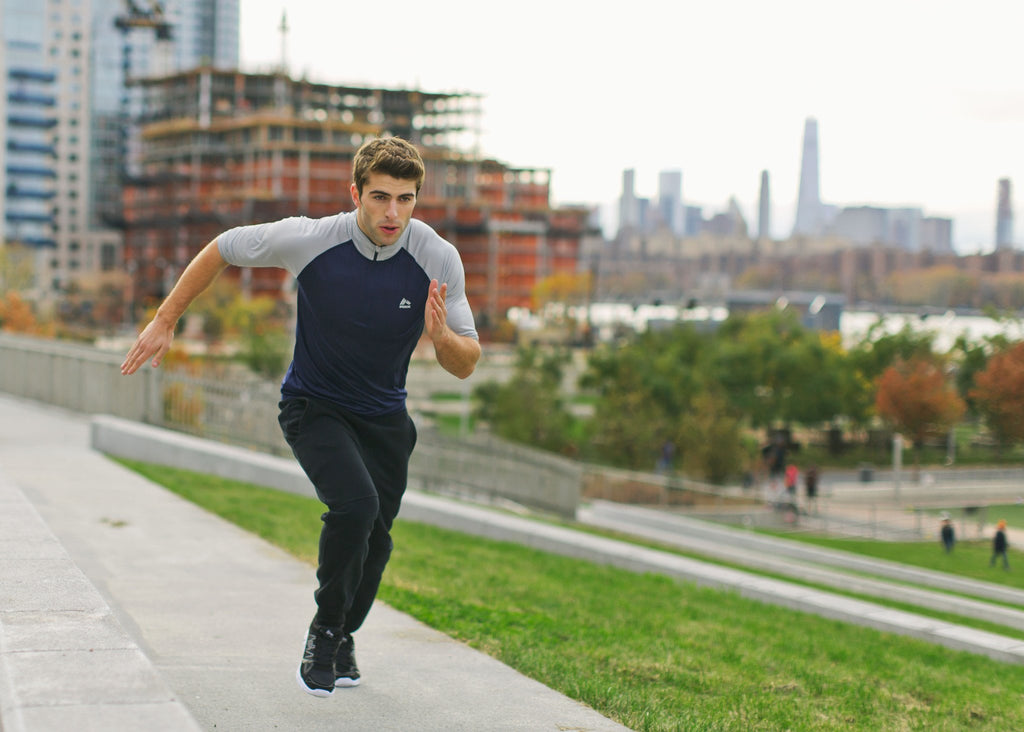
Running has been at the center of exercise-related scrutiny for as long as we can remember. While running has its obvious benefits, such as cardiovascular improvement and weight loss, its potential risk for injury has lead to common misconceptions about the activity. Below are five myths about running that runners are tired of hearing about:
- You Have To Run The Whole Time
Some beginners to running go into the activity believing that they have failed if they need to walk at any point during their workout. Not only is it important to walk if your body is demanding it, but walking during set intervals can help you go farther than torturing yourself through pain. According to a study from the Journal of Science and Medicine in Sport, including regular walking breaks can keep you at the same pace as if you ran the entire time – while avoiding damage to your body at the same time.
So don’t be hard on yourself for walking occasionally; you’re probably doing your body a favor!
- Running Hurts Your Knees
The argument about whether or not running is bad for your knees is still up in the air – and it probably will be for quite some time. Though the jury is still out on the issue, there are facts surrounding running and its impact on your knees. Basically, it depends on several factors. Running does put more pressure on your joints compared to walking, but that doesn’t necessarily mean that your chances of developing osteoarthritis are increased. In fact, running can actually improve cartilage in the knees and make your bones and muscles stronger. Studies have shown that runners with no preexisting knee problems have a lower risk of developing arthritis compared to less active non-runners.
Arthritis is more likely to develop through genetics and age rather than gradual joint impact. Still, there are ways that running can indeed bring a regression to your knees and joints. Technique is one of them. The way the foot strikes the ground and overall posture are keys to keeping strong biomechanics. Besides form, the shoes you wear and the surface you run on are other factors to consider.
- Barefoot Running Is The Way To Go
The 21st century saw the increasing popularization of the minimalist shoe. The practice of running without shoes or very little cushion has been around forever, though its globalization occurred largely because of Christopher McDougall’s 2009 book, Born to Run. McDougall argues in favor of running minimally, as his studies of the Tarahumara, a Mexican tribe with the ability to run hundreds of miles without stopping, confirm that humans were in fact made to run this way.
McDougall isn’t the only one calling for the end of the cushioned shoe. A study by Harvard found that running shoes with extra cushion causes a higher chance of landing heel first, which absorbs more shock than landing mid-strike. So there is a correlation between leg injuries and high-cushioned shoes, but that doesn’t mean that barefoot running is right for you. If you already have tendonitis, flat feet, or plantar fasciitis, running barefoot or in minimalist shoes may give you further injury. If you feel that you’re ready to try the new phenomenon, go gradually. Shifting from one style to the other is something your feet and legs will likely not be accustomed to immediately.
- You Have To Stretch Before Running
Stretching has many benefits and by no means should be excluded from your workout regimen. Deciding when to stretch, however, is what makes all the difference. Static stretching, such as touching your toes, could tear muscle fibers and weaken them before a run. Instead, save those for after your run, as they’re made to stretch muscles in a resting state. Dynamic stretching, which includes leg swings and lunges, will help improve blood flow before a run and get you better mentally prepared for you workout. Stretching absolutely has its place in running, just make sure that you discern between the two forms and use them at the right time.
- Carbs Are Everything
Carbohydrates are very important for runners, and our bodies rely on them as its main source of fuel. For distance runners, carbs become increasingly more imperative in order to keep energy up. Most carbs are stored as glycogen in your muscles and liver, which is burned during aerobic exercises. Between carbohydrates, fats, and protein, carbs are the preferred source of energy, as the other two are backups for when your body runs out of glucose. Still, there are many carbs out there that are stripped of nutrients that your body needs. Fruits, whole grains, and legumes are some examples of good carbohydrates. Attempt to avoid foods like French fries and white grains, which is low in fiber. Make sure you also don’t over-eat before a run, and instead try to fill up the day before. Lastly, it’s important that you get nutrients from other areas, such as proteins and good fats.


